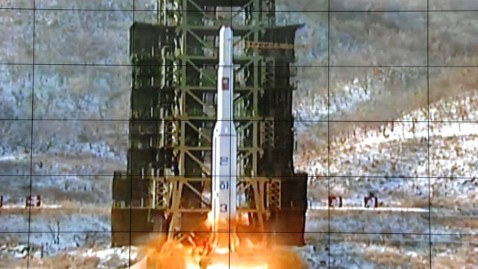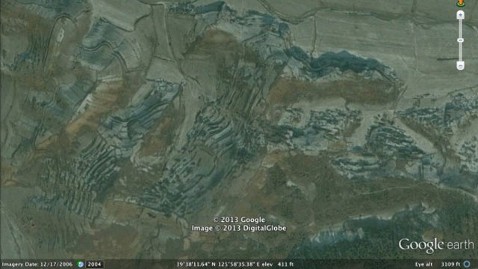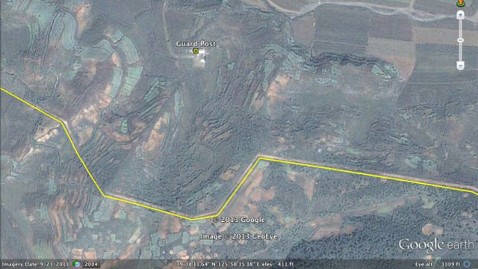Google Earth Used to Spot North Korean Labor Camp

Launch of North Korea's Unha-3 rocket, Dec. 12, 2012. AP Photo.
North Korea appears to be both a threat and an enigma. In recent days, it has boasted that its ballistic missiles are a threat to the United States, but hard information is difficult to get from that very closed communist country.
American intelligence agencies watch North Korea very closely, and so does Curtis Melvin, a Ph.D. economics student at George Mason University in Virginia. He keeps a blog called North Korean Economy Watch, which has become something of a clearinghouse for people who want to know more about the country under Kim Jong Un. To get information, he uses such sources as online newspapers, Korean TV newscasts, accounts from defectors who share their experiences - and Google Earth.
PHOTOS: An Inside Look At North Korea
Now, he reports, he has spotted what may be the perimeter of a new prison camp (a kwan-li-so in the local language), hidden in the mountains of North Korea. Based on his find, another blog, One Free Korea, posted two images from Google Earth, the first shot by an Earth-observing satellite in December 2006.

One Free Korea/Google Earth
Google Earth has just posted new images of the same spot, shot by a different satellite in September 2011, and Melvin says there are signs that a new camp may have been set up.

One Free Korea/Google Earth
"I hope I am completely wrong on this," he wrote in an email to ABC News. "However, the facility bears a remarkable resemblance to other known prison camps in the DPRK [Democratic People's Republic of Korea]."
Melvin said he visited North Korea in 2004 and 2005, and has been watching it since. With help from others who are curious about that very closed society, he has spotted rocket launch sites, palaces - and, apparently, gulags, some of them larger in area than sprawling cities. There appear to be at least half a dozen major camps, and some analysts say they hold more than 100,000 prisoners.
"After seven years," he said, "I have amassed a colossal amount of satellite imagery that has been used to show the development of new factories, expansion of the electricity grid, the spread of markets, new military infrastructure and, unfortunately, apparent changes in the incarceration system."